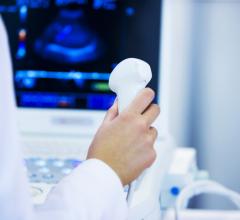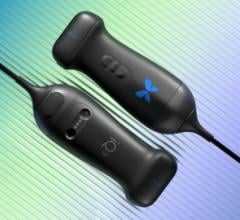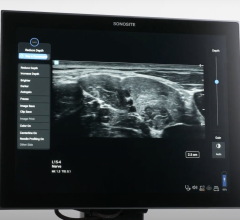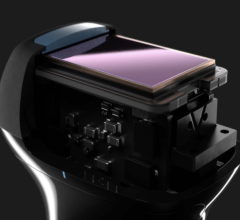This was a strong year for ultrasound technology, with several groundbreaking systems and technologies making waves in the field. More than anything, the last 12 months have demonstrated the immense versatility of the technology, as it expanded to new applications while deepening its utility in other arenas. In September, Frost & Sullivan named 4-D ultrasound imaging as one of its top medical technologies for the year, identifying it as one of the technologies it believes will drive growth in the healthcare industry in the near future. These types of systems — such as the Voluson E10 from GE Healthcare and Toshiba’s Aplio 500, among others — offer extremely high image quality, approaching that of computed tomography (CT). The Aplio 500 has received attention for its Fly Thru advanced visualization feature, which allows users to “see” the inside of fluid-filled ducts and vessels for better exploration of lesions and masses.
Noteworthy New Systems
A number of new ultrasound systems were introduced in 2015, with the focus on touch screen and handheld units. The year’s slate actually kicked off at the 2014 Radiological Society of North America (RSNA) annual meeting when Carestream unveiled the Carestream Touch ultrasound. As the name suggests, the system features an all-touch control panel, streamlining operation to improve exam efficiency and accuracy; primary function keys sport etched markings so users can easily find them without looking away from the display monitor. Employing an all-touch panel allows for a sealed panel, which makes for easier cleaning to ensure sterility. The system offers compatibility with several transducers and users can select the desired transducer type with one touch. The Carestream Touch, which marked the company’s entry into the ultrasound market, received U.S. Food and Drug Administration (FDA) approval this past June.
Mindray also ventured into the touch screen ultrasound space with the introduction of the TE7 in July 2015. Intended as a point-of-care solution, the system operates like a tablet: Tap to start functions, pinch and drag to zoom in and out, and swipe to expand the image. The TE7 features numerous exam presets, with several enhanced cardiac functions including continuous wave Doppler and a transesophageal echo (TEE) transducer.
2015 saw additional handheld ultrasound units introduced to the market, coming from Philips and Rivanna Medical. Philips debuted the Lumify app-based ultrasound system this past June. The “system,” however, consists of a special transducer that can be plugged into any consumer-grade Android device, and a cloud-based app. The company said the system is intended for use in emergency departments, urgent care centers and other point-of-care environments. The transducer performs both image acquisition and some of the image processing, with all images displayed directly on the smartphone screen. The first-generation transducer has already received FDA approval and began shipping. Philips plans to release more transducers, applications and services for the Lumify system in the future.
Rivanna Medical announced FDA approval for the Accuro a month later, and launched the system in October. Accuro is more specialized than Lumify, indicated for automated navigation during spinal anesthesia. It also has applications in abdominal, musculoskeletal, cardiac and peripheral vascular anatomies.
Interventional Echo on the Rise
In the cardiology space, the role of echocardiography in interventional procedures greatly expanded in 2015. The boom was spawned by FDA approvals for major technologies in the field, including two transcatheter structural heart procedures, including transcatheter aortic valve replacement (TAVR) devices, the Abbott Mitraclip for mitral valve repair, and the Watchman left atrial appendage closure device from Boston Scientific. Implantation of these devices is complicated, requiring ultrasound imaging — specifically TEE — to ensure proper placement.
The 2015 annual meeting of the American Society of Echocardiography (ASE) saw the convergence of several new cardiovascular ultrasound technologies, highlighted by GE Healthcare’s Vivid E95 and Philips’ HeartModel Anatomically Intelligent software. The E95 is set up to be the new flagship system in GE’s echocardiography roster, featuring enhanced image quality due to greater amounts of data being processed through the transducer.
The HeartModel A.I. software adds advanced quantification, automated 3-D views and enhanced reproducibility of results to Philips’ Epiq 7 ultrasound system. The central theme of the software is to increase patient throughput without sacrificing image quality. According to study data, exams conducted with HeartModel A.I. were able to gather data on left ventricular and atrial dimensions and volumes three to six times faster than conventional 2-D exams.
New Research
While ultrasound is typically employed in a diagnostic role, several major studies in the last year have focused on its capabilities as a treatment method for both acute and chronic conditions.
Several studies focused on its capabilities as a cancer detection and treatment aid. In September, the National Cancer Institute bestowed a $1.7 million grant to a University of Arkansas for Medical Sciences researcher for clinical testing of a new ultrasound-based technique called photoacoustic flow cytometry for the early diagnosis and treatment of melanoma. The technique involves a laser that penetrates the skin and superficial veins, heating the natural melanin nanoparticles in melanoma circulating tumor cells (CTC). The cells expand and create nanobubbles as they heat, allowing detection with an ultrasound transducer attached to the patient’s skin. A secondary laser pulse vaporizes the nanobubbles and increases the sound 10-50 fold, destroying the CTCs.
Concurrently, researchers in Norway discovered that ultrasound contrast microbubbles can be employed as agents for delivery and absorption of pancreatic cancer drugs. Three different contrast agents were used in the pilot study, injected into 10 patients following infusion of a standard chemotherapy drug. An ultrasound transducer was used to initiate “sonoporation,” a transient opening and resealing of tumor cell membranes to enhance delivery and absorption. Follow-up found tumor size reduced and/or growth slowed in all 10 patients.


 April 24, 2024
April 24, 2024 








